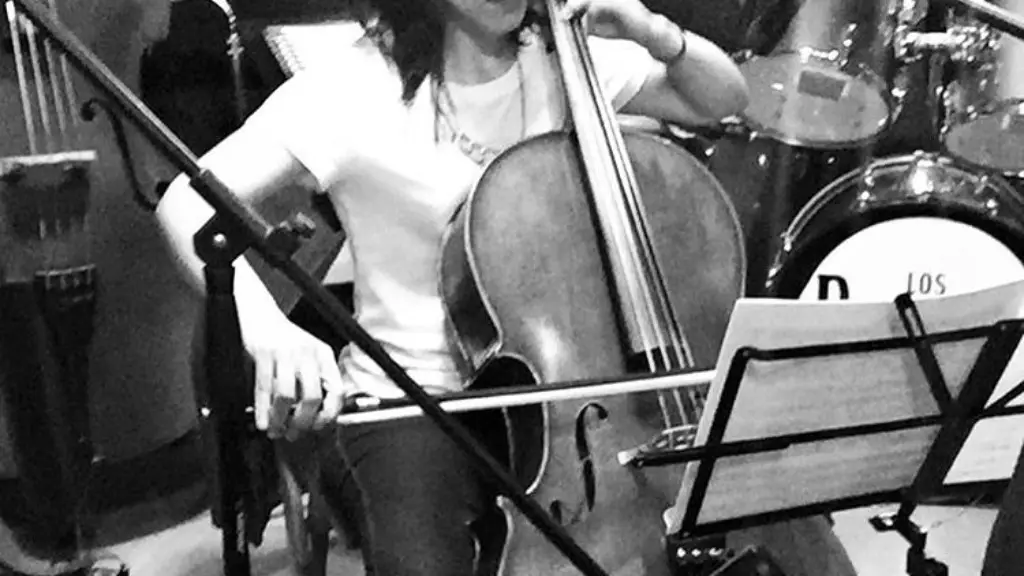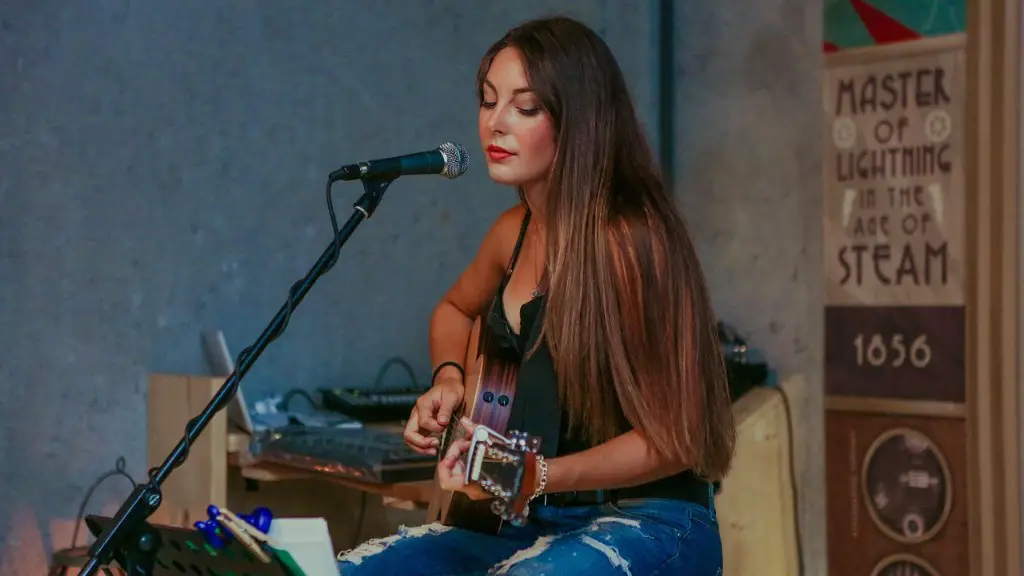In order to compose a good photo, there are a few things you need to take into account. The first is the frame of the photo. The frame is what will be seen in the photo, so you need to make sure that it is not too busy or cluttered. The second is the subject of the photo. The subject should be the focus of the photo, so you need to make sure that it is in sharp focus and well lit. The third is the background of the photo. The background should compliment the subject, so you need to make sure that it is not too busy or distracting.
A photo can be composed in many ways, but here are a few tips:
-The rule of thirds is a great starting point for composition. This means dividing your frame into thirds, both horizontally and vertically, and placing your subject at one of the intersections.
-Think about leading lines and how they can draw the viewer’s eye into the photo. Look for things like roads, fences, or rivers that can act as leading lines.
-Framing is another tool you can use to add interest to your composition. This can be done by using things like doorways, windows, or archways to frame your subject.
-Finally, don’t be afraid to get creative! There are no hard and fast rules when it comes to composition, so experiment and see what works best for you and your subject.
How do you compose an image?
When composing a photograph, there are a few key things to keep in mind in order to create a strong and visually appealing image. First, it can be helpful to place points of interest on the intersections and important elements along the lines in the frame. This will help to draw the viewer’s eye into the photograph and create a sense of movement. Additionally, it is important to find a contrast between the subject and the background. This can be done by using natural frames like windows and doors, or by getting close to the subject. By doing this, the subject will stand out more and the image will be more impactful.
Photo composition is the art of arranging visual elements within a frame. It is the photographer’s way of putting subjects or scenes inside a space in a pleasing way. Although it may sound easy, it is anything but. Composition is one of the most important aspects of photography, and it takes practice and skill to master.
What are the 5 rules of composition in photography
In photography, composition is key to creating a well-balanced, beautiful photo. There are five main elements of composition that you should always keep in mind:
1. Avoid Too Much Negative Space
Negative, or empty, space is great for balancing your photo and emphasizing a focal point. However, too much negative space can make your photo look unfinished or uninteresting.
2. Embrace Lines
Lines are a great way to add interest and depth to your photo. Use them to lead the eye towards your subject or to create a sense of movement.
3. Obey the Rule of Thirds
The rule of thirds is a classic composition technique that can help you create a more balanced and pleasing photo. Simply divide your frame into thirds, both horizontally and vertically, and place your subject along one of the lines or at one of the intersections.
4. Create Depth With a Clear Foreground, Middleground, and Background
A photo with a clear foreground, middleground, and background will appear more three-dimensional and will have greater visual interest. To create depth, make sure that each element is distinctly visible and in sharp focus.
5. Use Background Elements to Frame Your Subject
A good composition is one in which every visual element has a precise role and adds something to the story. For a good composition, photography needs a balance between the elements in the frame. It means you have to balance the amount of detail and space, highlights and shadows, etc.
How do I start composing?
There is no one correct way to compose a song, but there are some basic steps that can help you get started. By listening to a variety of music and analyzing what you like and don’t like, you can start to develop your own taste. Learning to play an instrument (or two) can also be helpful, as you’ll be able to better understand how music is put together. Studying music theory and sight reading will also give you a strong foundation on which to build.
Once you have a good understanding of the basics, you can start to experiment with different moods and themes for your song. Once you have an idea of what you want to say, you can choose a song structure or format that will help you communicate your message. The melody is often the starting point for many songs, so it can be helpful to begin there. Once the melody is established, you can start to add in other parts, such as harmony, countermelody, and rhythm.
Composting a song can be a fun and rewarding experience. By following these basic steps, you can get started on writing your own masterpiece.
There are a few things to keep in mind when composing your own music:
1. Listen to other composers for inspiration.
2. Learn music theory to understand the basics of how music works.
3. Play an instrument (or a few) to get a feel for how to create music.
4. Just start writing! Don’t worry about perfection, just get the ideas down.
5. Write one part at a time, and build up the piece from there.
6. Learn all the ins and outs of music software so you can create professional-sounding arrangements.
7. Work with a partner to bounce ideas off of and get feedback.
8. Experiment with different genres and styles to find what you’re most passionate about.
9. Always be open to new ideas and ways of composing.
10. Have fun! Music should be enjoyable to create and listen to.
What is composing a shot?
Composition is one of the most important aspects of creating a successful image. By carefully considering the arrangement of elements within the frame, you can control the way viewers interpret your photos.
Shot composition refers to the placement of visual elements within the frame. By carefully arranging these elements, you can guide the viewer’s eye toward the most important parts of the image. By using various composition techniques, you can create images that are aesthetically pleasing and convey your intended message.
If you want to create a successful composition, you need to include a focal point, structure, and balance. A focal point is something that will draw the viewer’s eye and attention. Structure refers to the way the elements are arranged in the composition. Balance is the placement of the elements in the composition so that they are evenly distributed.
What are the two types of composing
The four types of composition are:
-Description: A composition that provides a detailed, vivid picture of a person, place, thing, or event.
-Exposition: A composition that provides information or explains a concept.
-Narration: A composition that tells a story, usually in chronological order.
-Argumentation: A composition that takes a position on a issue and supports that position with evidence.
The golden ratio is a guide to where to place a subject (a tree, person, building, etc) or element in a photo (like the horizon) where it will be most pleasing to the eye. That divine ratio is 1618:1. The first recorded definition of the golden ratio came from Euclid in the 3rd Century BC.
What is the golden rule in composition?
This is a well-known formula for dividing a line into two parts. The formula states that the ratio of the larger section (a) to the smaller section (b) is equal to the ratio of the whole length (a + b) to the larger section. In other words, this formula can be used to find the point at which to divide a line into two parts so that the ratio of the two parts is equal to the ratio of the whole line.
One of the most important aspects of photography is composition. Composition is how you arrange the elements in your frame to create a certain effect. There are a few key composition rules that every photographer should know.
The Rule of Thirds is a classic composition rule that states that you should place your subject off-center, so that it falls on one of the thirds lines. This creates a more interesting and dynamic composition.
The Golden Ratio is another composition rule that you can use to create pleasing and balanced compositions. It’s a bit more complex than the Rule of Thirds, but essentially you just need to divide your frame into sections using the Golden Ratio.
A simple and clean background is important in creating a well-composed image. It will help your subject stand out and not get lost in a busy background.
Framing your subject is another way to create a great composition. You can use branches, doorways, or other objects to frame your subject and create a more interesting image.
Leading lines are another tool to use in your compositions. Leading lines can help draw the viewer’s eye into the image and lead them to your subject.
The horizon should be level in your images, unless you are going for
What are the 3 rules of composition
The Rule of Thirds is a composition rule of thumb that states that an image should be divided into thirds, both horizontally and vertically, so that there are nine sections. The subject of the image should be placed along those lines or their intersections.
Iconic images are those that are widely recognizable, such as the Mona Lisa or the American flag.
Leading the eye is a technique used to draw a viewer’s attention to a particular part of an image. This is usually done by leading the eye from one point to another with a line or by using contrasting colors.
Including & Excluding Elements:
When it comes to composition in photography, one of the most important things to keep in mind is the idea of including and excluding elements. This means that you need to be careful about what you include in the photo, and what you leave out. This can be tricky, but it’s crucial in order to create a well-composed image.
One way to think about this is to consider the overall message that you want to convey with your photograph. What are the most important elements of the scene that you want to include? And conversely, what can you leave out without affecting the overall message? By carefully considering these things, you can start to make decisions about what to include and exclude in your composition.
Pay Attention to the Background:
Another important element of composition in photography is the background. This is often an overlooked element, but it can actually be very important in the overall composition of an image.
The background can often times be just as important as the foreground, so it’s important to pay attention to it. Make sure that the background compliments the foreground and doesn’t take away from it. Also, be sure to watch out for things like distracting elements or busy patterns that can take
What is Photo composition examples?
Shapes are one of the most important elements in photography composition. By finding and including geometric shapes in your photographs, you can create images that are more pleasing to the eye. Look for triangles, circles, squares, rectangles, and even more complex forms like rhombus or diamonds. The easiest way to find shapes are in architecture, but we can find so many of these compositional elements in nature, too. By including these shapes in your images, you will create compositions that are more visually appealing and balanced.
Composing can be a real challenge, especially when you’re just starting out. There are so many things to learn and it can be tough to wrap your head around everything. It’s also easy to get overwhelmed by all the possibilities and to start pieces but never finish them. Keep at it though, and you’ll gradually get better and better at it.
Is it hard to compose
Composing can be extremely hard work, and requires a great deal of discipline and determination to see it through. However, the payoff can be great, and composing can help you become a better musician overall.
There is no one path to becoming a successful composer. Some composers are self-taught, while others have formal training. Many composers find that their success is mostly skill-dependent, and that many training or formal education requirements are for personal, self-improvement purposes. Like any artist, their methods and education can be highly individual.
Final Words
There’s no one answer to this question since it can vary depending on the desired outcome of the photo. However, some general tips on composing a photo might include considering the rule of thirds, finding leading lines, and creating a sense of depth. Additionally, it can be helpful to focus on a specific subject or theme and to frame the shot in an interesting way.
In conclusion, composing a photo is all about balance and finding the right elements to include in the frame. It’s important to think about the overall composition and how each element contributes to the overall effect. With practice, you’ll be able to instinctively find the right composition for any scene.



